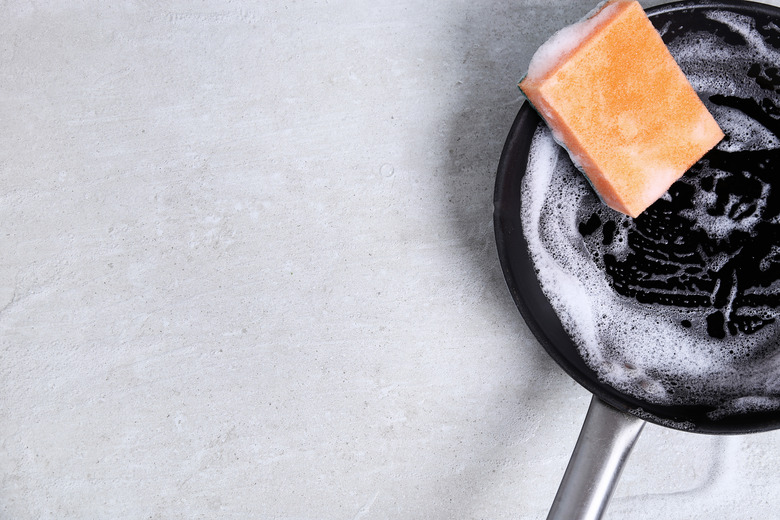How To Get Burnt Plastic Off Of Pans
Cleaning plastic off of a stainless steel or nonstick pan is no easy task. Many people struggle to scrape it off with a knife and risk hurting themselves or breaking a knife blade. Fortunately, there are safer ways to get burnt plastic off of pans as long as you have the right products.
Removing Melted Plastic from Metal
Removing Melted Plastic from Metal
Plastic is one of the most popular materials for household items. Plastic makes cooking and cleaning easier, not to mention food storage. However, when fire is involved, things can get complicated. This is especially true when plastic, metal and heat are working together.
Anytime you're using plastic around a stove, it's important to watch the heat. Often, people forget that they have a burner on, and a plastic spoon, spatula or other cooking tool melts inside the pan. In addition to an unpleasant, acrid smell and the potential release of toxins into the air, melted plastic can stick to the bottom of a pan, ruining it and make it unfit for use.
However, there are ways to remove melted plastic from metal. While it can be difficult, if you apply heat, cold and abrasive cleaning agents properly, you should have success removing the spatula melted in the pan.
Risks Associated with Melted Plastic
Risks Associated with Melted Plastic
Cleaning melted plastic off of metal can be challenging particularly because of the dangers of heat. Most people notice that the frying pan smells like burnt plastic, but by the time they turn the burner off it's too late. Pans are ruined and the air is filled with a terrible smell that lingers for days.
In other scenarios, people will accidentally place pots or pans on top of plastic bags or other thin plastics that can melt and adhere to the external side of the pot or pan. At first this seems like an easier situation than the plastic on the inside of the pan since that's where the food goes. Unfortunately, no matter where on the pan the melted plastic is, when the pan heats up, the plastic will heat up too, causing an acrid smell and the possible release of more toxins.
Freezing the Pan
Freezing the Pan
When plastic has melted onto or in a pan or pot made of metal or stainless steel, the first thing to do is use a dull knife to try and pry the plastic off of the metal. Start slowly and gently to get the plastic off if it is warm and malleable, taking care to wear gloves in case the pan or the plastic is still hot.
If you cannot get the plastic off easily with a knife, place the pot or pan into the freezer. Leave the pan in the freezer overnight. In the morning, the metal may have cooled to the point where you can easily pop the plastic off with a knife.
Using an Iron
Using an Iron
Unlike heating the pan over the stove, applying an iron can quickly remove plastic without releasing the same terrible smell into the house. This, unfortunately, only works if the plastic is on the outside of the pan or if the pan is large enough to fit the iron inside.
Take a thin cloth and place it over the melted plastic. Turn the iron on to high heat and, wearing heavy-duty work gloves, run the iron over the cloth, back and forth. As the iron heats up, the plastic should begin to heat up as well. As it gets more malleable it may stick to the cloth, allowing you to pull it away from the metal pan in one clean movement. Once you've removed the plastic, use an abrasive cleansing agent like a baking soda paste or Bar Keepers Friend to remove any residual bits of plastic that may still be clinging to the pan.
